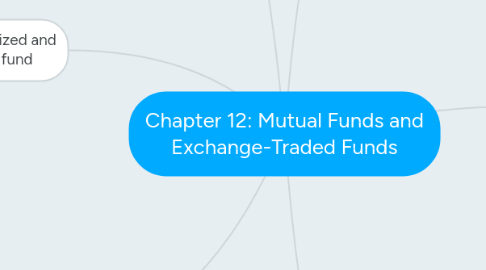Chapter 12: Mutual Funds and Exchange-Traded Funds
por tay kay kean

1. Definition of Mutual Funds
1.1. An investment company that invests its sharehilders' money in a diversified portfolio of securities.
1.2. A type of services organization that receive money from pool of shareholders
2. How mutual funds are organized and factors in comparing mutual fund
2.1. How mutual funds are organized
2.1.1. Accumulation of wealth
2.1.2. Storehouse of value
2.1.3. Speculation and short-term trading
2.2. Factors in comparing mutual funds
2.2.1. Fund's investment performance
2.2.2. Tax efficiency
2.2.3. Fee structure
2.2.4. How particular fund fits into your portfolio
2.2.5. Investment skills of fund managers
2.2.6. Load or no-load funds
2.2.7. Closed-end or Open-end funds
3. The management company
3.1. Open-end investment companies
3.2. Closed-end investment companies
3.3. Exchange-traded funds
3.4. Back-end load
3.5. Load funds
3.6. No-load funds
3.7. Low-load funds
4. Sources of return from mutual funds and calculation of return
4.1. Dividen income
4.2. Capital gain distributions
4.3. Change in price
5. Attractions: Types of mutual funds
5.1. 1. growth funds
5.2. 2. Aggressive growth funds
5.3. 3. Value funds
5.4. 4. Equity-income funds
5.5. 5. Balanced funds
5.6. 6. Growth-and-income funds
5.7. 7. Bond funds
5.8. 8. Money market funds
5.9. 9. Sector funds
5.10. 10. Socially responsible funds
5.11. 11. Asset allocation funds
5.12. 12. International funds
6. Drawbacks: Mutual funds investor services
6.1. Automatic investment plans
6.2. Automatic reinvestment of interest, dividends, and capital gains
6.3. Systematic withdrawal plans
6.4. Conversion (exchange) privileges
6.5. Phone switching
6.6. Easy establishment of retirement plans


